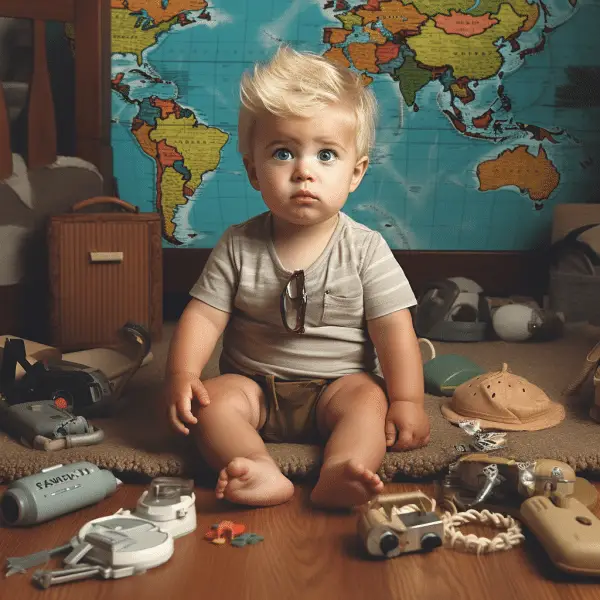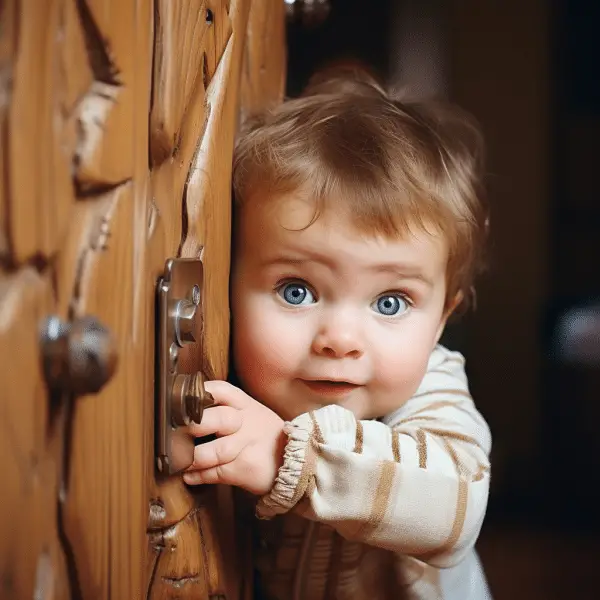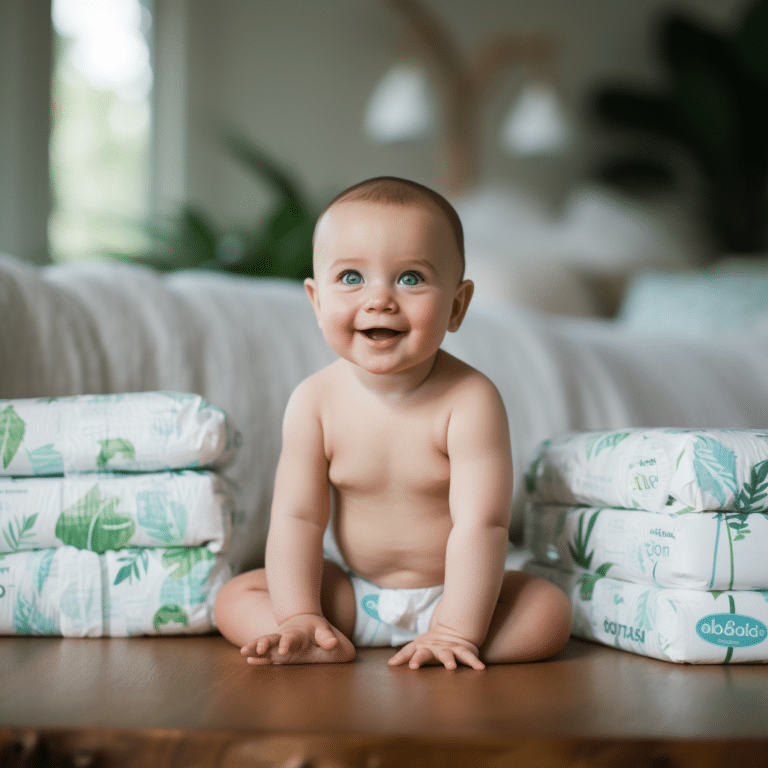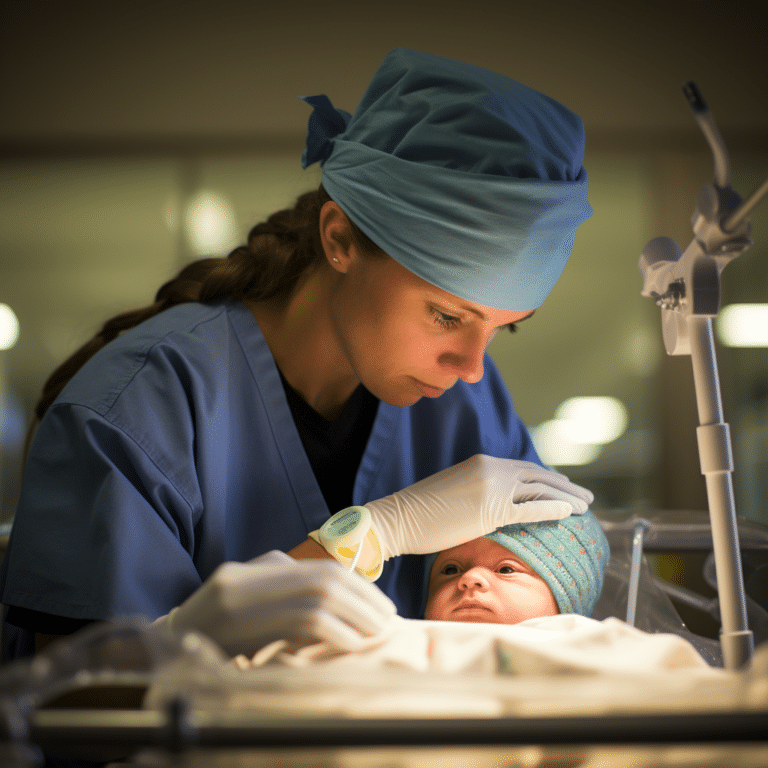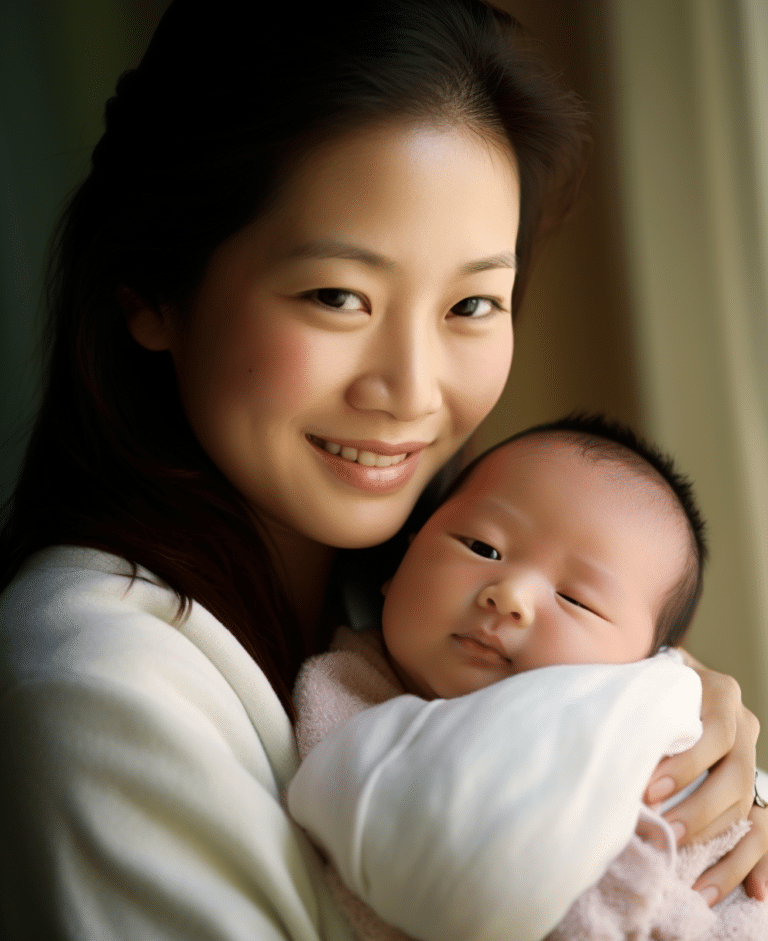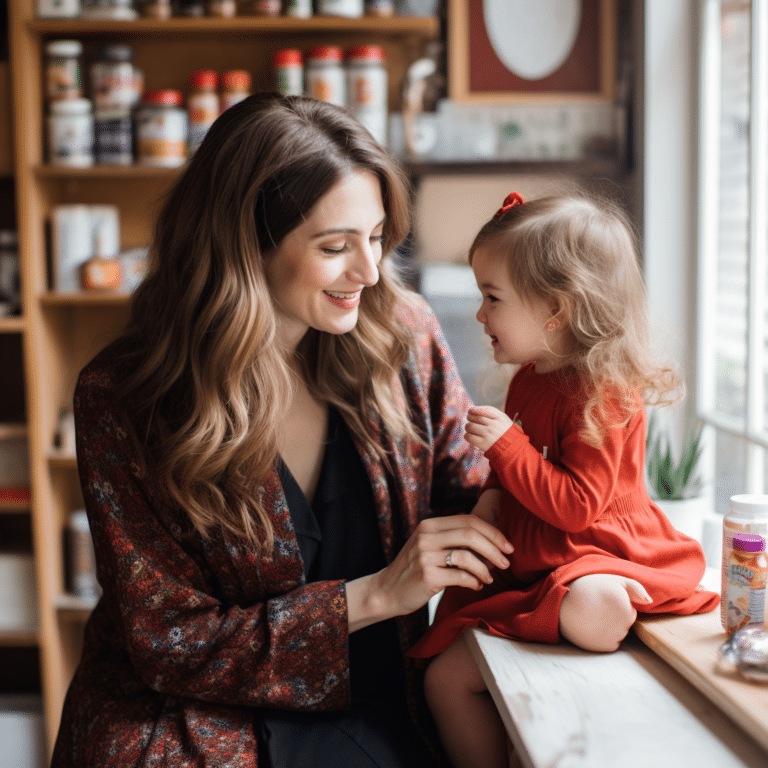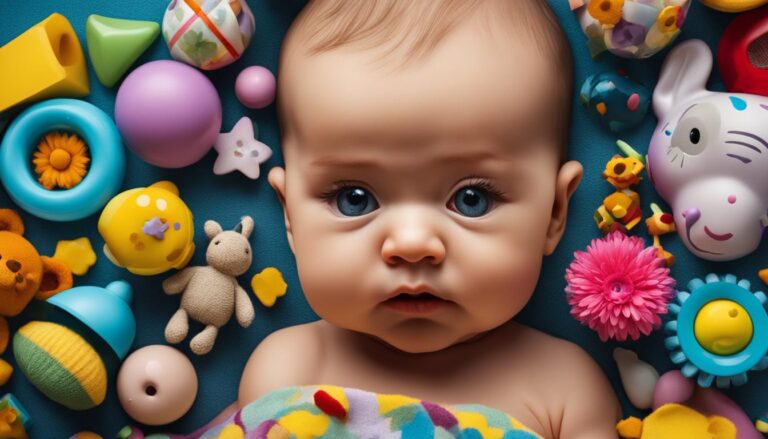Safe Haven: The Ultimate Babyproofing Guide
Safe Haven Creating a safe environment for your little one is paramount. Baby-proofing your home is a crucial step in ensuring your infant’s safety. By implementing the necessary precautions and following the ABCs of safe sleep, you can provide a secure space for your baby to explore and grow.
Key Takeaways:
- Baby-proofing is essential for creating a safe environment for your little one.
- By following the ABCs of safe sleep, you can ensure your baby’s safety.
- Implementing the necessary precautions in each room is crucial for baby-proofing.
- Baby-proofing helps prevent potential hazards and dangers in your home.
- Providing a secure environment allows your baby to explore and grow safely.
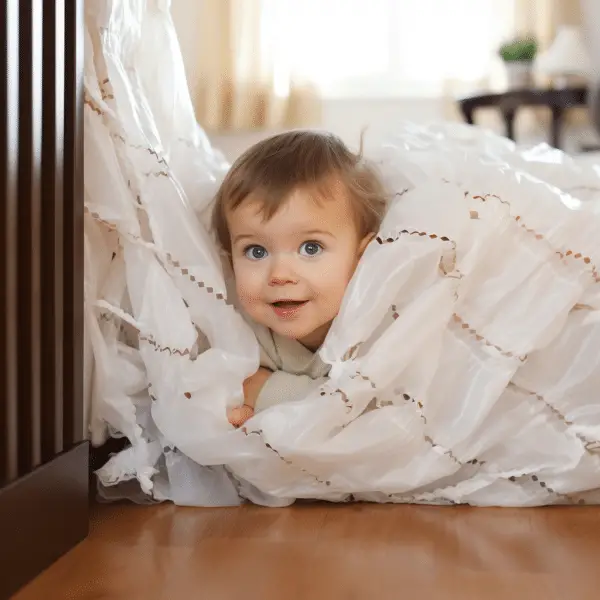
Why Allow Babies to Roam?
Allowing babies to explore their surroundings is not only adorable but also crucial for their development. When babies are given the freedom to roam and discover their environment, it stimulates their brain growth, enhances their physical skills, and fosters their independence. As they crawl, walk, and explore, they learn to problem-solve and navigate their surroundings, which sets the foundation for their cognitive and motor development.
During this stage, babies are like little explorers, absorbing information and building connections in their brain. Every new shape, color, texture, and sound they encounter provides them with valuable sensory experiences that contribute to their brain development. The more they explore, the more their brain pathways strengthen, allowing them to learn and adapt to the world around them.
“Children need the freedom and time to play. Play is not a luxury, but a necessity for their developing brains.” – Kay Redfield Jamison
Physical skills also develop through exploration. As babies crawl, they strengthen their upper body and core muscles, preparing them for the milestone of walking. By allowing babies to roam, they have the opportunity to practice their gross motor skills, improve their coordination, and enhance their balance and spatial awareness.
Independence is another vital aspect nurtured when babies are given the freedom to explore. Through their explorations, babies learn to make choices, take risks, and become more self-reliant. They develop a sense of autonomy and confidence as they navigate their surroundings, leading to a greater sense of independence as they grow.
| Benefits of Allowing Babies to Roam | Developmental Milestones |
|---|---|
| Stimulates brain growth | Cognitive development |
| Enhances physical skills | Gross motor development |
| Fosters independence | Autonomy and confidence |
Giving Babies a Safe Environment to Explore
While it’s important to encourage babies’ exploration, ensuring a safe environment is crucial. Babyproofing your home is essential to minimize potential hazards. By removing dangerous objects, securing furniture, and creating designated safe spaces, you can provide a secure environment where your baby can freely roam and explore.
Remember, allowing babies to roam doesn’t mean leaving them unsupervised. It’s important to supervise their explorations and create boundaries to ensure their safety. Maintaining a balance between freedom and safety will allow your baby to thrive and develop their full potential.
Assessing the Rooms: Bedroom, Living Room, Kitchen, Nursery, Bathroom, Closet, Garden, Patio
Creating a safe environment for your baby involves assessing each room in your home for potential hazards. Let’s take a closer look at the key areas and the specific risks you need to be aware of:
Bedroom
In the baby’s bedroom, make sure the crib meets safety standards and is positioned away from any windows or cords that could pose a strangulation risk. Keep blankets, pillows, and stuffed animals out of the crib to prevent suffocation. Secure any furniture that could tip over and ensure that all cords from blinds or curtains are tied up and out of reach.
Living Room
In the living room, secure heavy furniture, such as bookshelves or TV stands, to the wall to prevent tipping. Use safety gates to block off stairs or areas with potential hazards. Cover electrical outlets with safety plugs or outlet covers and keep any small objects or choking hazards out of reach.
Kitchen
The kitchen can be a hazardous area for babies due to hot surfaces, sharp objects, and cleaning chemicals. Use stove knob covers to prevent accidental burns or ingredient spills. Keep sharp utensils, cleaning supplies, and chemicals locked away in a high cabinet or a cabinet with a childproof lock. Keep small appliances like toasters and blenders unplugged and out of reach.
Nursery
In the nursery, secure the changing table to the wall to prevent tipping and always stay within arm’s reach of your baby during diaper changes. Ensure that all cords from blinds or curtains are tied up and out of reach. Keep diapering supplies, such as creams and wipes, within easy reach but out of your baby’s reach.
Bathroom
In the bathroom, install a toilet lock to prevent drowning accidents. Keep all medications, toiletries, and cleaning products locked away in a high cabinet or a cabinet with a childproof lock. Use non-slip mats in the bathtub and never leave your baby unattended during bath time.
Closet
Secure closet doors with childproof locks to prevent your baby from accessing potentially dangerous items. Keep any small objects, such as buttons or coins, out of reach. Ensure that the closet is well-ventilated and free from any potential hazards, such as mold or pests.
Garden and Patio
In the garden and patio areas, make sure all fences and gates are secure to prevent your baby from wandering off. Remove any poisonous plants or sharp objects that could pose a risk. Keep all tools, gardening supplies, and chemicals locked away in a shed or storage area.
By understanding the specific risks in each room and taking the necessary precautions, you can create a safe and secure environment for your baby to explore and grow.
Risks in Baby’s Growth Stages: Crawling, Walking, Exploration
As your baby grows and reaches new milestones, it’s important to be aware of the specific hazards that come with each stage of their development. From the moment your baby starts crawling to their first steps and beyond, there are potential risks that you need to address to ensure their safety.
Crawling Hazards: During the crawling stage, your baby will be exploring their surroundings on all fours, which means they will be able to reach objects and spaces that were previously out of their reach. It’s crucial to assess your home for potential hazards such as small objects, cords, and electrical outlets. Consider installing outlet covers, keeping small objects out of reach, and securing cords and wires to prevent accidents.
Walking Risks: Once your baby starts walking, they will have a whole new level of mobility. Falls become a more significant concern, so it’s essential to create a safe environment by securing furniture, installing safety gates, and using corner guards to prevent injuries. It’s also crucial to be mindful of stairs and ensure they are properly gated to prevent falls.
Exploration Dangers:
As your baby becomes more curious and adventurous, their exploration can lead them to potentially hazardous areas. Keep an eye out for open cabinets, sharp edges, and toxic substances. Use safety locks on cabinets, cover sharp corners with bumpers, and store cleaning products and medications out of reach. It’s also essential to secure heavy furniture and appliances to prevent tipping accidents.
| Growth Stage | Key Hazards | Preventive Measures |
|---|---|---|
| Crawling | Small objects Cords and wires Electrical outlets | Install outlet covers Keep small objects out of reach Secure cords and wires |
| Walking | Falls Unsecured furniture Stairs | Secure furniture Install safety gates Gate stairs |
| Exploration | Open cabinets Sharp edges Toxic substances | Use safety locks on cabinets Use corner guards Store hazardous substances out of reach |
The Do’s and Don’ts of Babyproofing
When it comes to babyproofing your home, it’s essential to follow certain guidelines to ensure the safety of your little one. By implementing the right precautions and avoiding common mistakes, you can create a secure environment for your baby to explore and play. Here are the do’s and don’ts of babyproofing:
Do:
- Secure furniture to the wall to prevent tipping.
- Use safety gates to block off stairs and other hazardous areas.
- Cover electrical outlets with outlet covers or safety plugs.
- Install window guards or window stops to prevent falls.
- Keep small objects, choking hazards, and toxic substances out of reach.
- Use corner protectors on furniture and fireplace guards to prevent injuries.
- Use cordless window coverings to prevent strangulation hazards.
- Keep the crib free from pillows, blankets, and stuffed animals to reduce the risk of suffocation.
Don’t:
- Rely solely on baby monitors – always supervise your baby directly.
- Leave electrical cords hanging or within reach of your baby.
- Use crib bumpers, as they can pose a suffocation risk.
- Leave hot beverages within reach or on unstable surfaces.
- Forget to secure cords from blinds or curtains, as they can pose a strangulation hazard.
- Leave cleaning products or medications accessible to your baby.
- Ignore potential hazards in the bathroom, such as drownings or burns.
- Underestimate your baby’s ability to reach and grab objects.
Remember, babyproofing is an ongoing process. As your baby grows and develops new skills, reassess your home regularly to ensure it remains safe. By following these do’s and don’ts, you can create a protected environment that allows your baby to explore and thrive.
| Do’s | Don’ts |
|---|---|
| Secure furniture to the wall | Rely solely on baby monitors |
| Use safety gates | Leave electrical cords hanging |
| Cover electrical outlets | Use crib bumpers |
| Install window guards | Leave hot beverages within reach |
| Keep small objects out of reach | Forget to secure cords from blinds |
| Use corner protectors | Leave cleaning products accessible |
| Use cordless window coverings | Ignore bathroom hazards |
| Keep the crib free from suffocation risks | Underestimate your baby’s abilities |
Emergency Preparedness
When it comes to the safety of your baby, being prepared for emergencies is crucial. Establishing an action plan and having an emergency kit on hand can make all the difference in a critical situation. Here are some important steps to take:
- Create an Action Plan: Identify potential emergency scenarios that could occur in your area, such as fires, earthquakes, or severe weather. Determine safe areas in your home and establish evacuation routes. Discuss and practice the plan with your family so that everyone knows what to do in an emergency.
- Assemble an Emergency Kit: Prepare a well-stocked emergency kit that includes essential supplies. This should include items such as food, water, medications, first aid supplies, flashlights, batteries, and a battery-powered radio. Keep the kit in an easily accessible location and regularly check and replace expired items.
- Know Important Contact Information: Keep a list of emergency numbers, including the local fire department, police, and poison control. Also, include the contact information for your child’s pediatrician and any other important healthcare providers.
Remember, being prepared is key to ensuring the safety of your baby in unexpected situations. By establishing an action plan, assembling an emergency kit, and knowing important contact information, you can have peace of mind knowing that you are ready to handle any emergency that comes your way.
Providing a safe environment for your baby is a top priority, and being prepared for emergencies is an essential part of that. By taking the time to create an action plan, assemble an emergency kit, and know important contact information, you can help protect your baby in any situation. Remember, it’s better to be safe than sorry!
Should You Call an Expert?
When it comes to babyproofing your home, you may find yourself wondering whether you should tackle the task on your own or call in an expert. While DIY babyproofing can be a cost-effective option, there are certain situations where seeking professional help may be the best choice. Let’s explore the pros and cons of both approaches to help you make an informed decision.
The Benefits of DIY Babyproofing:
- Cost-effective: Doing it yourself can save you money, as you won’t have to pay for professional services.
- Customization: You have the freedom to tailor the babyproofing measures to meet your specific needs and preferences.
- Learning experience: DIY babyproofing allows you to gain knowledge and skills that can be helpful in other areas of child safety.
When to Consider Professional Help:
- Complexity: If your home has unique features or requires extensive modifications, an expert can provide the expertise needed to address these challenges.
- Lack of time: Babyproofing can be time-consuming, and if you have a busy schedule, hiring a professional can save you valuable time and effort.
- Peace of mind: Professionals have the experience and knowledge to identify potential hazards that may not be obvious to an untrained eye. Their expertise can offer you peace of mind knowing that your baby is in a secure environment.
“While DIY babyproofing can be a cost-effective option, there are certain situations where seeking professional help may be the best choice.”
Ultimately, the decision to call an expert or pursue DIY babyproofing depends on your specific circumstances and comfort level. Remember, your baby’s safety is of utmost importance, so be sure to assess the complexity of the task, your available time, and your confidence in your own abilities. If you do decide to seek professional help, choose a reputable babyproofing expert who can provide tailored solutions for your home.
| DIY Babyproofing | Professional Babyproofing | |
|---|---|---|
| Cost | Lower cost as you won’t need to pay for professional services. | Higher cost due to professional fees. |
| Customization | You have the freedom to tailor the babyproofing measures to your specific needs and preferences. | Experts can provide customized solutions based on your home’s unique features and potential hazards. |
| Time | Requires significant time and effort on your part. | Saves you valuable time and effort, especially if you have a busy schedule. |
| Expertise | You gain knowledge and skills through the DIY process. | Professionals have the expertise to identify potential hazards that may not be obvious to an untrained eye. |
Conclusion
In conclusion, baby-proofing your home is of utmost importance when it comes to ensuring the safety and well-being of your little one. By following the ABCs of safe sleep and implementing necessary precautions in every room, you can create a secure environment for your baby to explore and grow.
Remember to thoroughly assess the risks in each room, from the bedroom to the garden, and take appropriate measures to eliminate potential hazards. By securing furniture, keeping dangerous objects out of reach, and creating barriers where necessary, you can significantly reduce the risks to your baby’s safety.
Additionally, it’s crucial to be prepared for emergencies. Establish an action plan and have an emergency kit readily available, equipped with essential supplies to handle any unexpected situations. By being proactive and knowing what steps to take in case of a fire or natural disaster, you can ensure the safety of your baby and your entire family.
While baby-proofing can be a DIY project, there may be instances where seeking expert help is necessary. Consider your own abilities and the complexity of the task at hand. If you’re unsure or overwhelmed, don’t hesitate to call in a professional who can provide guidance and expertise to guarantee the highest level of safety for your baby.
FAQ
Why is baby-proofing important?
Baby-proofing is essential for creating a safe environment for your little one. It helps prevent accidents and injuries by eliminating potential hazards in your home.
When should I start baby-proofing?
It’s best to start baby-proofing before your baby starts crawling or walking, as they can quickly get into things they shouldn’t. However, it’s never too late to make your home safer for your little one.
What are some common hazards to look out for?
Common hazards include sharp edges, electrical outlets, choking hazards, unsecured furniture, cleaning products, and stairs. It’s important to assess each room in your home for potential risks.
Are there any specific baby-proofing products I should consider?
There are many baby-proofing products available, such as outlet covers, cabinet locks, edge and corner guards, and safety gates. These can help in creating a secure environment for your baby.
Can I do the baby-proofing myself or should I hire a professional?
Baby-proofing can be a DIY project, but it may be necessary to seek professional help, especially for complex installations or if you’re unsure about certain safety measures.
How important is emergency preparedness?
Emergency preparedness is crucial for ensuring the safety of your baby. Having an action plan and an emergency kit on hand can help you respond quickly and effectively in case of emergencies.
What are some common mistakes to avoid when baby-proofing?
Some common mistakes to avoid include relying solely on baby gates for safety, leaving small objects within reach, underestimating your baby’s abilities, and not regularly checking and updating baby-proofing measures.
